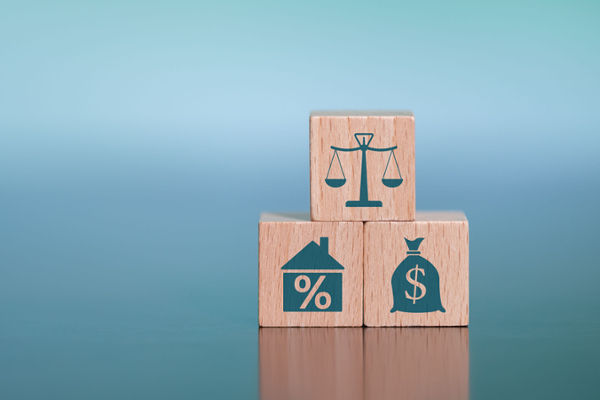
Is this 1945 or 2008?
If you have been watching the business pages in your newspaper, you may have noticed that some business and government leaders are beginning to discuss the potential for inflation.
By Peter W.B. Phillips, Director, Centre for the Study of Science and Innovation; and Distinguished Professor, Johnson Shoyama Graduate School of Public PolicyIf you have been watching the business pages in your newspaper, you may have noticed that some business and government leaders are beginning to discuss the potential for inflation. While the Bank of Canada has offered guidance that inflation is likely to remain near the lower end of its 1-3 percent target range, there is some concern that all of the stabilization efforts of government—large Covid-19 programs and payments and quantitative easing in the monetary system—may cause demand to outpace supply, generating significantly higher inflation.
For most of us, rising and high inflation is something from past generations. Canada has not had significant inflation (defined as general upward movement in all prices at the same time) since the 1980s, even in the face of major economic disruptions. Some conclude that inflation is no longer possible.
So how do we reconcile those two perspectives? What makes the current circumstances more likely to trigger inflation than all the other events over the past 30 years?
On the side of those arguing against any inflationary risk, we can see a number of important factors. First and foremost, at the moment governments are simply backfilling for depressed market activity; as long as consumer spending and business investment remain weak, there is little risk of excess demand triggering rising prices. Moreover, with relatively open international trade and financial markets, localized inflationary pressures should be dampened by competition from abroad.
Those discounting inflationary fears also point to 2008 and the fact that government efforts to restore growth after the financial crisis did not cause inflation. But are circumstances in 2021 the same as in 2008?
I would argue we are in a quite different place. The underlying cause of the 2008 slump was asset revaluation in the stock and housing markets that, in addition to raising unemployment and dropping profits, cut the underlying value of the assets in firms, pensions, houses and insurance accounts. Much of the recovery effort was used to build back asset balances throughout the economy and not to spend on things.
We are in a different place in 2021. While global stock markets dropped sharply in March 2020 in response to the pandemic, markets in Canada and globally have since fully recovered and housing prices have been rising in Canada. Moreover, in Canada the Covid payments from government have, on average, fully covered lost wages due to the quarantine measures and recent data suggests that the personal savings rate jumped to a record high of 28% late last year; there was no corresponding jump in 2008.
Looking back in time, the last time we saw such pent up demand and high savings was in 1945, when the economy was recovering from five years of war. Policy makers then mostly thought the economy would slump due to the end of wartime spending, but in fact consumers went out and spent wildly, causing a sharp run-up in inflation. Households might just do that again. So-called ‘revenge spending’ (channeling George Herbert, who asserted ‘living well is the best revenge’) could come quickly and in unexpected ways. If governments fail to factor in this spending and continue their stimulus, we may yet get too much money chasing too few goods, and trigger inflation.
That is why everyone is looking carefully for evidence of inflation. Policy makers are watching for warnings in both the real economy and financial markets. Early signals of inflation might be found in commodity markets, capital utilization rates and help wanted indexes (all which have recovered sharply since Q2 2020 in both Canada and the US). In financial markets, rising interest rates, especially for long-dated bonds, signal long-term expectations (Government of Canada long bonds rose above 2 percent recently, from below 1 percent early last year). None of these are conclusive proof of inflation, but they are signals we should be watching closely.
The issue facing policy makers is not really about our policy today. The real concern is whether governments can and will act fast enough to take their foot off the gas if and when households and business reenter the market. Between 1945 and 1980, when governments engaged extensively in macroeconomic stabilization, we learned that it is difficult if not impossible for governments to get their timing right. If they misjudge again, inflation is a real prospect.
Peter W.B. Phillips

Dr. Peter W.B. Phillips is the director of the Centre for the Study of Science and Innovation, and a distinguished professor at the Johnson Shoyama Graduate School of Public Policy's University of Saskatchewan campus.
He earned his Ph.D. at the LSE and practiced for 13 years as a professional economist in industry and government. At the University of Saskatchewan, he was the Van Vliet Research Professor, created and held an NSERC SSHRC Chair in Managing Technological Change in Agriculture, and was director of the virtual College of Biotechnology.
He has had appointments at the LSE, OECD, European University Institute in Florence, University of Edinburgh and University of Western Australia. He was a founding member of the Canadian Biotechnology Advisory Committee and was on the boards of Canadian Agri-food Policy Institute, Pharmalytics and Ag-West Bio Inc. He has also held over 15 peer-reviewed grants worth more then $250 million and is author/editor of 15 books, and over 60 journal articles and 55 book chapters.

